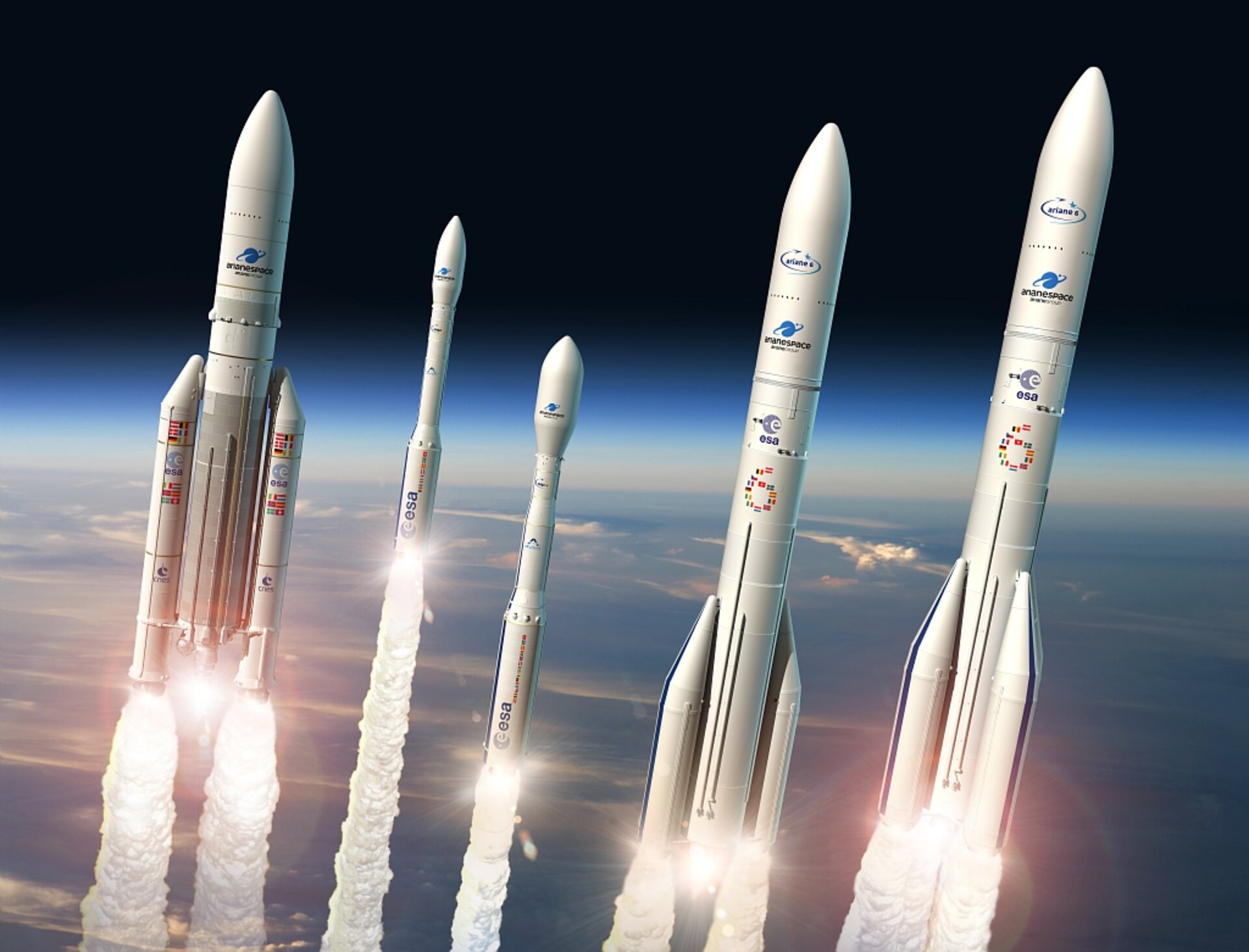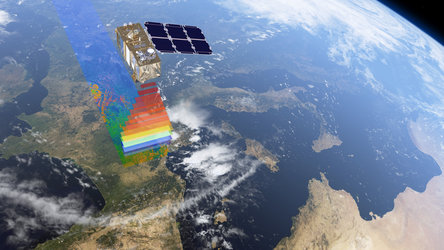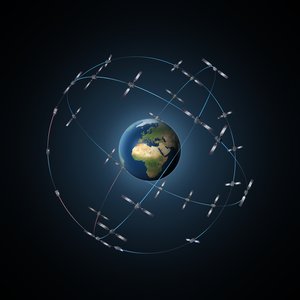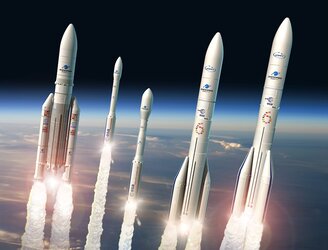Launcher Programmes
Resolution on Europe's Spaceport, Centre Spatial Guyanais (CSG)
Goal
Continue Agency contribution to the funding of the CSG and associated services covering the period 2017–21.
Outcome
Guarantee of the availability of CSG Launch Range services, necessary for Europe’s Spaceport to remain operational, thereby allowing for reliable, affordable and independent access to space.
 |
 |
 |
Impact
Continued exploitation of the ESA-developed launchers Ariane 5 and Vega; increased industrial Europeanisation in the procurement of CSG launch range activities; implementation of cost reductions while increasing the technical perimeter and possible synergies related to the industrial activities performed at the CSG.
Launchers Exploitation and Accompaniment Programme (LEAP)
Preparing future generations of space transportation methods for Europe.
Goal
Continue LEAP beyond 2016 to allow continuous technical and economic sustainability of Ariane 5 and Vega exploitation.
Outcome
The implementation of the Launchers Exploitation and Accompaniment Programme (LEAP), in particular for sustainable Ariane 5 exploitation, will be essential for the achievement of Ariane 5 and Vega exploitation and cost reduction objectives, and will continue to contribute to the guarantee of unrestricted European access to space. Accompanying the exploitation of ESA-developed launchers by the public sector has proved fundamental for their continuous technical operational status and sustainable exploitation.
 |
 |
Impact
Maintaining the technical and economical sustainability of European launchers sector industry.
Space Rider
Goal
Develop an affordable, reusable end-to-end Integrated Space Transportation System Service (Space Rider) to be launched on Vega-C to provide Europe with an independent capability to routinely access and return from low Earth orbit with a reusable system able to transport payloads for an array of applications, orbit altitudes and inclinations.
Outcome
Development up to System and Subsystem Critical Design Reviews and including time-critical procurement, for the period 2017–19, for a first launch in 2020.
 |
 |
 |
 |
Impact
European servicing of ISS and future orbital infrastructures; opportunities for in-orbit validation of technologies required for several application missions; possible educational missions; enhancement of European industry competitiveness in paving the way to a commercial service.
Vega-E Preparatory Activities
Goal
Continue the preparation of Vega-E (Vega Evolution) with focus on a LOX/methane engine for future upper stage replacing the current Zefiro 9 and AVUM, better responding to market needs both in terms of cost and performance, and reducing dependence on non-European sources. To that end, (i) completion of the Small Spacecraft Mission Service (SSMS) project, to respond to the growing demand of small satellites, and (ii) detailed design activities for the Vega New Upper Stage (VENUS) electric propulsion module.
Outcome
Vega-E definition activities, including Preliminary Design Review, VENUS development activities, including final completion of SSMS development and qualification.
 |
 |
 |
Impact
Enhanced Vega competitiveness in the launcher market, by reducing the cost to low Earth orbit; enhanced European industry competitiveness; improved offer/reduced launch service cost for heavy Sun-synchronous missions and small institutional missions; enlarged Vega launch services for widest variety of spacecraft missions.
Light satellite, Low-cost Launch (L3) Opportunities
Goal
Provide timely, competitive and standardised launch service solutions based on Vega/Vega-C and Ariane 6 for light satellites.
Outcome
Enlargement of the Vega/Vega-C and Ariane 6 launch service offer tailored to meet the needs of light satellites below 500 kg, and reduced launch service costs for small missions.
 |
 |
 |
 |
Impact
Pioneer the setting of technical and contractual standards for low-cost solutions for the launch of light missions; enable low cost and sustainable launch of light institutional missions (in particular technology and education); increased competitiveness of European industry on the institutional and commercial markets, all in synergy with users’ projects.
Future Launchers Preparatory Programme (FLPP) – New Economic Opportunities (NEO)
Goal
Prepare competitive technologies for future launchers with low development and production costs; to shorten launcher development duration (to less then five years) and lower development risks; and to promote industry and new Member States participation in launcher development.
Outcome
Proactive investment into a diversified preparation portfolio of launch system development, key technologies, new manufacturing processes and integrated demonstration before transfer into development; validation of an ultra-low cost engine demonstrator (Prometheus) and availability of a LOX-methane test bench.
 |
 |
 |
 |
Impact
Consolidation of innovation, knowhow and competitiveness in the European launcher sector; inspiration and attractiveness for recruitment; safeguarding of critical competencies for operational launchers, long-term sustainability and furthering business opportunities.












